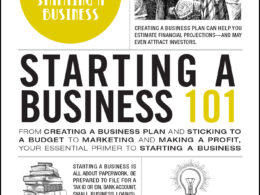The following is an excerpt from “Exposure: Insider Secrets to Make Your Business a Go-To Authority for Journalists” by Felicity Cowie. Copyright 2022 by Practical Inspiration Publishing.
In the foreword to “Exposure: Insider Secrets to Make Your Business a Go-To Authority for Journalists” by Felicity Cowie, the leading venture capital investor in tech companies, Eileen Burbidge MBE, illuminates the relationship between investment and media relations.
Eileen writes: “Founders are always inundated when starting or scaling their companies and seeking out media coverage may seem a vanity project whilst forsaking investing time in the early team or product.
“However, these efforts aren’t mutually exclusive and often what’s needed to help develop a stronger talent pipeline or customer acquisition funnel is, in fact, media coverage and establishing the company’s position as a thought leader, expert and innovator in its field.”
In her introduction, Cowie goes on to share eight reasons why getting ready for media coverage makes sense, even in the early days of a business in this excerpt:
- Gain exposure with zero to low financial investment
Unpaid media coverage has none of the up-front costs of advertising, marketing campaigns or events. Even social media channels, free to set up, often require budget to acquire a consistent stream of meaningful content if they’re to gain traction.
However, just one strong piece of media coverage will win you exposure to thousands if not millions of readers or viewers and is evergreen; you can showcase it on your website for years. What you do have to invest is some time to prepare and offer journalists something they’re willing to report on. And where you have control over your advertising, campaigns and events you have none over how journalists independently report the information you give them. For this reason, it’s wise to make a financial investment in skills to help you best navigate those risks and gain the coverage you want. What you gain if you succeed is exposure from journalists who know how to write to engage, and in almost every media outlet more than one person will work on your story, so you gain a crack team reporting on you.
- Build credibility
Third-party media coverage serves as outside validation and helps establish credibility for a business. Journalists know how to find holes in a story and can choose anybody to work with, so when your business is featured in a Financial Times or Bloomberg news story, this is proof you’ve stood up to their scrutiny and selection. Investors need a reason to believe in your business, and media coverage can give them this, particularly if you can demonstrate the growth of your business from your first big contract win, to partnerships signed and awards won, to transformations delivered in the real world.
When you publish content on your own channels this is always viewed as self-promotional, no matter how valuable. However, if a third party selects and includes you in their content this carries greater trustworthiness.
- Build pipeline faster
If you’re getting all the coverage above from media outlets that are viewed and valued by your ideal customers, then you can build your pipeline much faster via these platforms, which will be far more established and far-reaching than your own nascent social media channels.
- Get highly valuable shareable content
You can leverage media coverage to grow your own channels faster. Media coverage generates buzz because people find “being in the news” or knowing somebody in the news exciting.
You can put backlinks to it on your website, “As featured in…,” post it on social media with words such as “delighted to be joining the global conversation about [the subject of the coverage] in this news story” and attach a screenshot or link to it. The coverage will drive up word-of-mouth marketing and engagement on your own channels and boost search engine optimization.
Investors rely on recommendations from people in their trusted networks, so by sharing your media coverage (especially on channels such as LinkedIn) you’re maximizing opportunities for this coverage to be flagged to them within their online communities and newsletters.
- Find product-market fit
Einstein said, “If you can’t explain it simply, you don’t understand it well enough.” And I’d offer as a variant on this, “If you can’t explain it to a journalist, you haven’t understood your product-market fit well enough.” It may be painful to experience a journalist’s blunt “I don’t get it” when you attempt to pitch. However, you can take this as free consultancy!
Journalists LOVE case studies, so if you can’t provide one that’s compelling enough for a journalist this is further feedback that you’re not yet defining the problem that your product meets for the market and showing how you solve it.
- Become a thought leader and ‘category king’
If you’re wholly focused on getting one product out to market and that fails, then your only option is to seek out more markets and hope you find your customers before your budget runs out. But if alongside your race to product-market fit you’re also getting exposure and recognition as somebody with valuable ideas or thought leadership in your space, then you become bigger than your product, which means you can test out several products until you find something that takes off. This helps you buy time if you need to, but if you’ve nailed your product-market fit this is a powerful way of communicating that you care about your customers and their worlds – you aren’t just selling to them.
You may be attempting to create not just a new product but a new category of product, to become a “category king,” a business that creates entirely new niches to dominate. If you’re the only person who can talk about this category and the need for it, then you can create a role for yourself as a “go-to” authority for the media. To gain this traction as a “category king,” or “queen,” you need to use words that journalists will understand and amplify. This whole book shows you how to do this.
- Get funding and more funding
All the benefits above are going to put you in a strong position to win investment.
“Businesses which generated the highest amount of media coverage typically saw a 35,635% increase in their funding between Series A and Series B. Conversely, companies which generated a low level of media interest only saw modest increases in their funding – 143.6%.” (Source: Hard Numbers and CARMA, 2020)
Media coverage is evidence that you have valuable “vision- telling” skills in addition to your business. As uber-venture capitalist Bill Gurley said: “The great storytellers have an unfair competitive advantage. They are going to recruit better, they will be darlings in the press, they are going to raise money more easily and at higher prices, they are going to close amazing business developer partnerships and they are going to have a strong and cohesive corporate culture. Perhaps, more to the point, they are more likely to deliver positive investment return.” (Source: Gurley, 2015)
And this all holds true for crowdfunding, too, where media coverage serves to build the buzz and community ahead of the fundraise.
- Gain external validation
In my experience, this is, without a doubt, the benefit most businesses want from media coverage. They may understand the other seven benefits logically, but this is the one that speaks to their hearts. In my early conversations with new clients, I’ve noticed that many really struggle to put into words or outcomes exactly what they want to get out of media coverage. They just know they want it. And I believe what they want is the external validation that media coverage offers.
It’s a powerful human need to feel that what you’re doing matters to the world. We want to get our businesses off the ground but paradoxically need to feel reassured we aren’t drifting meaninglessly above and away from the world we want to interact with and impact. We also know that to attract and retain top talent, great customers, investors and members we need a way to prove that what we’re all doing together is valid.
You can read more about all of this and gain tools to do it all in the new book “Exposure: Insider Secrets to Make Your Business a Go-To Authority for Journalists.”






